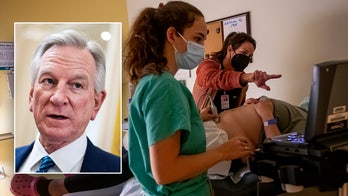This afternoon in Michigan, President Obama will announce a new $12 billion, ten-year initiative to improve the nation's community college success and graduation rate. That hefty price tag is sure to stoke some anger on the Hill.
Deputy Undersecretary of Education Bob Shireman explains the financing this way, "This would be fiscal year [20]10 money and, assuming that congress does this in the reconciliation bill that will be considered over the next few months, it would be in the first six months of next calendar year."
Shireman adds, "Our hope is to include it in a balanced piece of legislation that eliminates waste in the student loan programs, increases Pell Grant funding and reduces the deficit."
With this money, President Obama hopes to reach a new goal of 5 million additional community college graduates by the year 2020. This would further his oft-stated goal of the US leading the world in proportion of citizens with college degrees by the same year.
There are currently 6 million students in community colleges. The administration officials didn't have on-hand the average proportion of community college graduates a year, but you'll probably hear Obama using the number 11 million today.
Though the graduation rate is clearly not 100% or they wouldn't be announcing this effort, officials on the call just added that 6 million number to their additional 5 million by 2020 goal, to bring the total to 11 million graduates by 2020.
To that end, Mr. Obama will roll out four main policy initiatives.
Here's a detailed break-down of those initiatives and where the money will be spent:
1- Community College Challenge Grants
Issue being tackled: "under-funding" of community colleges and limited of capacity to launch new initiatives, finance technical training, provide adequate counseling, etc.
> Funding will be awarded on competitive basis. The ones that work will receive continued funding.
> Will try business partnerships so community colleges can work with employers to coordinate curriculum geared to workplace, align with businesses that offer internships, develop career pathway programs: workers can earn additional credentials to get promotions at work, integrating w/four-year colleges so academic credit can be transferred seamlessly, etc. For students struggling: more and better remedial and adult education and counseling services.
Again: Only those with results continue getting funding. This is similar to Education Secretary Duncan's Race to the Top Fund.
> Cost: undetermined share of $9 billion, along with Access and Completion Fund
2 - Access and Completion Fund
Issue being tackled: 40-50% of community college entrants who say they will earn a degree or transfer to four-year college fail to do so.
> Want to test ideas like colleges designed around needs and schedules of working adults. These will be performance-based scholarships. Will "insist" on results. Will also help states develop way to track student progress, graduation rates and employment outcomes.
> Cost: undetermined share of $9 billion, along with Community College Challenge Grants
3- Modernizing Community College Facilities
Issue being tackled: Many suffer from outdated facilities, lack of classroom space, unable to keep up with maintenance costs.
> Going to invest $2.5 billion dollars "in order to spark $10 billion in renovation and construction at community colleges nationwide". Can be used to pay interest on bonds or loans to seed capital campaigns or for states to create revolving loan funds.
4- Open Online Courses
Issue being tackled:"There is tremendous potential for online course material to improve student learning. There is reason to think that online materials can be more effective than classroom instruction alone." (James Kvaal, Special assistant to the President for economic policy)
> Some of promising approaches: artificial intelligence tutoring and multi-media courses.
> Gonna provide seed funding to bring experts together to develop best possible curriculum. Courses will be avail through community colleges, DoD, others. Will evaluate to be sure boosting student learning.
> Cost $500 million
> Take year or two to develop the courses, maybe sooner.
> DoD been using a lot of these technologies and haven't released the best of what they have. Will be tapping DoD for this technology.
> Would NOT be owned by fed government. Would be grants to others. Condition would be that it's in public domain, so could be used for free by anyone.
Background on community college system:
* Junior college system began to grow after WWII when vets came back to America. Truman opened door. Then 50s-today, growing exponentially.
* Changed from "junior" college to Community College System.
* Served lots of women who were cut out at first, economically disadvantaged, etc. Today: people transitioning from welfare to work, prison systems.
* Significant economic hardship. Concerned about access and opportunity during this economic climate.
* Expanding pell grants and college tax credits have helped a lot so can say doors will be wider for all to particip.
* Six mill americans in community colleges.




